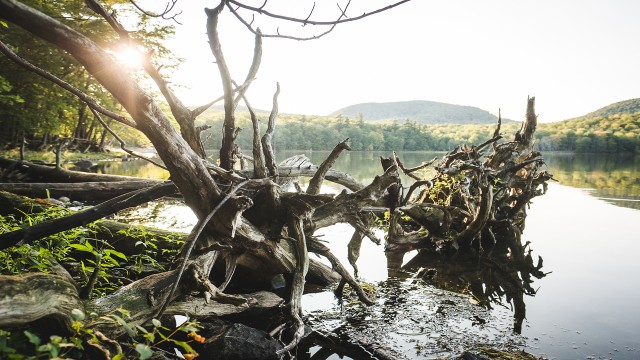As you explore the trails at the reserve you will see small creeks, wetlands, and groundwater springs. Even in the middle of winter, after months of no rain and freezing temperatures, many of the creeks and springs still flow. Researchers at McGill are studying how the unique and varied geology of the mountain controls how rain and snowmelt make their way through the environment and into the small creeks, wetlands and eventually Lac Hertel. As part of this work, a network of stations has been installed to measure air temperature and humidity, rainfall and snow accumulation, soil moisture, stream discharge and shallow groundwater levels.
Data from these stations can be used to track the journey of rain or snowmelt as it flows to Lac Hertel. While some rain and snowmelt flow over the ground surface, much of the water seeps into the ground and flows through the subsurface before discharging into the streams and lake.
As water moves underground, its pathway and travel time influence the waters chemistry and temperature when it re‐emerges at the surface. In turn, these properties are important to the ecology of the mountain. For example, where groundwater discharges to the surface, groundwater can moderate the local surface water temperatures providing a relatively warm aquatic habitat in the winter and a cooler habitat in the summer. The temperature stability groundwater provides is critical for many aquatic species. Similarly, groundwater absorbs minerals and nutrients and transports them to the surface where they can be used by plants and animals.
Groundwater discharge is an important component of many aquatic ecosystems. Not only does it add to the beauty and diversity of the reserve, but it also provides plants and animals with the habitat and resources they need.

